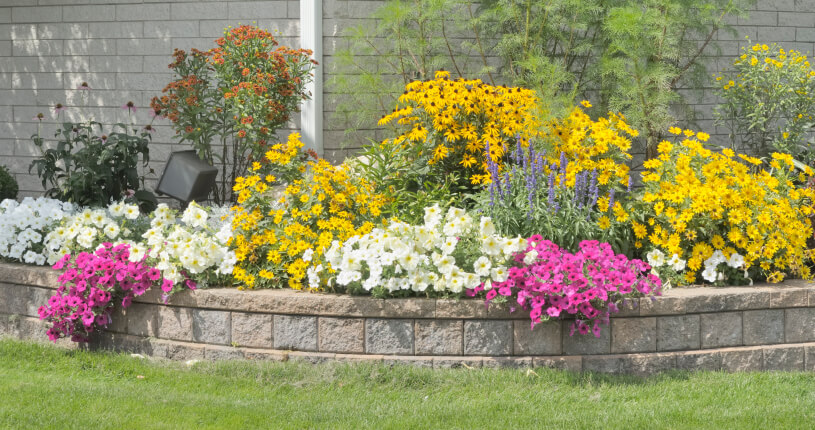
Choose the Right Garden Wall Blocks
It’s important to choose the right garden blocks if masonry walls and raised planters are part of your landscaping plan. The first factor to consider is application, because this influences the size block you need. Manufacturers produce a wide range of sizes loosely clustered into three broad categories:
Standard concrete blocks or CMUs come in sizes as small as 4 x 8 x 8 inches and as large as 12 x 8 x 16 inches. Small blocks are best suited to accent walls and planters, while larger ones are appropriate for retaining walls.
Garden wall blocks are comparatively small (about 12 x 4 inches) and relatively light (25 lbs or less). They’re best suited to accent and perimeter walls, short retaining walls and raised planters.
Full wall blocks are significantly larger. They’re about 18 inches long and 6 to 8 inches high, and can weigh between 50 and 75 lbs each. They’re designed for full-height walls, heavy duty retaining walls and similar applications.
Once you’ve determined application and size, consider which type of block best suits the intended application. Again there are three basic categories:
Concrete blocks or concrete masonry units (CMUs) are a cost-effective solution. They’re rectangular in shape and feature two interior open spaces. After the blocks are stacked, the spaces are filled with rebar, gravel or concrete which increases strength and stabilizes the structure. Traditional CMUs are stark and unadorned, but they can be stained or finished with brick or stone facing.
Split face blocks are standard concrete blocks manufactured with an attractive texture on one block face. They offer the strength and durability of traditional blocks with an added advantage: Because the cosmetic finish is integrated into the structural unit, they save time and reduce costs. They’re also available in numerous colors and styles. Slump blocks resemble adobe brick, rough face blocks resemble stone and ground face blocks feature a polished finish that emulates granite.
Interlocking block systems offer significant benefits. They feature variegated, more natural coloring and a range of sizes that resemble real stone. Each manufacturer uses a different interlocking configuration, but in general the blocks require no mortar and matching capstones provide a finished appearance. Most systems feature multiple shapes and sizes, so blocks can be laid in flowing lines for a more organic look and feel. The choices expand each year as new colors, shapes and textures are added.
Once you’ve narrowed down the basics, talk with your landscaper. Together, you can make more informed decisions about specific configurations, colors and textures. If you’re contemplating a comprehensive landscape makeover, remember many block manufacturers offer matching or complementary pavers for a completely coordinated appearance.